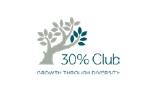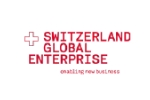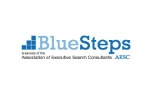Resilience: The Secret To Managing Any Crisis
In the modern world of today, business is beginning to shift gears, becoming more rapid in growth, this development comes with a new challenge, and this challenge would be better described by the fact that crises are coming towards your business faster and harder, this requires organizations to start becoming better equipped at handling setbacks, not just increasing profit, as Harvard Business Review found in their 2018 study of the UK’s longest-lasting organizations, the ones which have stood the test of time are those that focus not just on ‘efficiency and growing’ but those that ‘focus on getting better, not bigger.’, this never-ending race to become ‘better’ can generate a lot of workplace stress, putting risk on the health of your employees, and in turn the health of your organization. The Center for Disease Control found that a quarter of employees recognize their workplace environment as their number one source of stress.
What can you do about it? Well, you can try and find a solution to every challenge as it comes your way, or better yet why not create a solution that works across all challenges?
Sounds too good to be true, but that is exactly what building resilience does, the best way I always found to describe resilience, is that it works like a master key, a tool that gives you access to solutions more efficiently and with less effort. Imagine yourself, and your team, each walking around with a pocket full of keys, and now imagine your organization facing a challenge.
When I first thought of this analogy, I believed many business owners might not relate to it, or not quite understand how it applied to their organization, but I was always surprised by the fact they understood how stress and a lack of team resilience can greatly decrease the efficiency of their day-to-day operations, and lead to a state of disorganization, that’s very much like each employee is fumbling around trying to find the right key/solution.
So, what is resilience?
Resilience is described in the workplace as the individual and team ability to handle stress in the face of challenges, heavy workload, and the fast-based nature of today’s modern business environments. It is the ability to adapt, thrive, and use failure as a motivator that pushes you forward instead of putting your emotional state at a halt.
It is the ability to shift from “reacting” to stress, to “responding” to stress, as the human psyche is programmed to react, building resilience strengths your mentality and shifts you to responding with objective approaches.
“The one thing I always noticed; organizations that lack resilience have in common is a larger view of the problem. They recognize how stress is damaging their business, but the solutions they apply lack a real impact on their team’s emotional wellbeing and instead focus on operational efficiency. They fail to understand that their organizations consist of a group of individuals.”
“The one thing I always noticed; organizations that lack resilience have in common is a larger view of the problem. They recognize how stress is damaging their business, but the solutions they apply lack a real impact on their team’s emotional wellbeing and instead focus on operational efficiency. They fail to understand that their organizations consist of a group of individuals.”
- Dr. Nairouz Bader, Group CEO of Envision Partnership
How Can Organizations Start Building Resilience?
Before we get into the how, we need to understand how to recognize a healthy work environment that is built on resilience, and the best way to do that is to take a look at the “Resilience to Brilliance” program developed by Envision Partnership, describing 6 key indicators that promote healthy stress management in your organization:
1- Persistent under challenging circumstances, one of the key elements of resilience is learning how to handle a challenging work environment, and accepting there is always going to be a moderate amount of stress pushing you forward.
2- Realistically optimistic with a forward-looking perspective, being realistic when it comes to your workplace expectations, we do not live in a perfect world, and developing healthy and realistic perspectives is important.
3- Positively adapts to changing situations and responds to setbacks effectively, failure will always be a part of the process, and being equipped to adapt and thrive from it, is the main characteristic of a resilient mindset.
4- Has shared values and purpose, studies show that having clear and defined goals can highly increase the efficiency of in-house operational cycles, this requires effective and direct communication between high-level management and their teams.
5- A high level of self-awareness among team members, you could have 10 people working in the same position, yet each has their strengths and weaknesses, generating that level of self-awareness requires dedication into developing your talent, giving them the tools they need to better manage their expectations and develop their strengths and resilience.
6- Supportive and encouraging mindset, it is no surprise that some of the most successful companies out there have employees describing their colleagues as their second family. Nurturing that kind of supportive mindset proves crucial actions in increasing cooperation and collaboration, and in decreasing the impact of stress when facing challenges and setbacks.
2- Realistically optimistic with a forward-looking perspective, being realistic when it comes to your workplace expectations, we do not live in a perfect world, and developing healthy and realistic perspectives is important.
3- Positively adapts to changing situations and responds to setbacks effectively, failure will always be a part of the process, and being equipped to adapt and thrive from it, is the main characteristic of a resilient mindset.
4- Has shared values and purpose, studies show that having clear and defined goals can highly increase the efficiency of in-house operational cycles, this requires effective and direct communication between high-level management and their teams.
5- A high level of self-awareness among team members, you could have 10 people working in the same position, yet each has their strengths and weaknesses, generating that level of self-awareness requires dedication into developing your talent, giving them the tools they need to better manage their expectations and develop their strengths and resilience.
6- Supportive and encouraging mindset, it is no surprise that some of the most successful companies out there have employees describing their colleagues as their second family. Nurturing that kind of supportive mindset proves crucial actions in increasing cooperation and collaboration, and in decreasing the impact of stress when facing challenges and setbacks.
5 Ways You Can Start Building Resilience Now
To start building resilience and cultivate stronger mindsets, it starts with you but the organization can also have a huge impact on that personal growth, here are 5 ways to start with:
1-Take Care of Your Physical And Mental Health
On the personal side: Resilience is about mental health and being able to respond to stress triggers effectively, so it is only natural that your physical health can also impact that. You can start seeing immediate effects on your mental fatigue just by adopting some healthy habits into your lifestyle, going for a walk, consuming less caffeine, and choosing healthier eating and sleeping patterns.
When it comes to maintaining your mental health, you can try building a better life/work balance by dedicating time only for friends and family, practicing meditation, and using apps for mindfulness that are designed to relieve stress, like Headspace, Spire, Mental Workout, Calm, Whil, and Simple Habit.
On the organization side: The organization can also have a huge impact on the physical and mental health of its employees, by integrating simple but effective programs promoting physical and mental health into their work cycle.
*Tip: when you find yourself in a stressful situation, remember the 4 A’s — Avoid, Alter, Adapt and Accept.
2- Understand Your Failure On the personal side: Resilience is not about not failing, it is about how you handle your comeback, so understanding why you failed in the first place is key when it comes to building resilience, you can do that by keeping notes on what you did wrong, and creating quality checklists.
On the organization side: Failure is always part of the process, and it should be expected, and successful organizations will first seek how to learn from failures, instead of worrying over who to blame. You can start that by putting into action weekly or biweekly meetings designed to understand the core of your failure and giving guidance and support to equip your employees on how to handle them.
3- Be Easy On Yourself On the personal side: Just like we mentioned above, failure is a part of everyday life, and getting too stuck on them will only add to the burdens you are experiencing, leading you to make more mistakes. We also recommend taking detachment breaks every 90 to 120 minutes, to refresh your mind and focus on what is important.
On the organization side: Implementing clear reward systems, and emotional intelligence training sessions for management can greatly affect how they handle failure, and promote healthy coping mechanisms across the organization, hence creating a less hostile working environment.
4- Create A Plan To Develop Mental Agility On the personal side: Our brains are hardwired that in the face of setbacks we tend to dwell on the negatives. Developing mental agility aims to halt that process pivoting away from the emotional reaction we are used to and instead towards positive responses. We can practice mental agility by taking those moments and identify our emotions and know the reasons behind them. By doing that, we can activate the thinking domains of our brains in order to care more about how to respond efficiently to failure.
This process is crucial in building resilience, and while it may seem hard at first, with time it grows easier, and you will find yourself instinctively strategizing a plan of response when faced with setbacks.
On the organization side: Webinars, Peer-to-Peer review, and resilience-building sessions are great in building this quality in your employees.
5- It Does Not Stop Understanding it is a journey, not a fix, and that it takes time to build resilience, but with time the results will speak for themselves.
When it comes to maintaining your mental health, you can try building a better life/work balance by dedicating time only for friends and family, practicing meditation, and using apps for mindfulness that are designed to relieve stress, like Headspace, Spire, Mental Workout, Calm, Whil, and Simple Habit.
On the organization side: The organization can also have a huge impact on the physical and mental health of its employees, by integrating simple but effective programs promoting physical and mental health into their work cycle.
*Tip: when you find yourself in a stressful situation, remember the 4 A’s — Avoid, Alter, Adapt and Accept.
2- Understand Your Failure On the personal side: Resilience is not about not failing, it is about how you handle your comeback, so understanding why you failed in the first place is key when it comes to building resilience, you can do that by keeping notes on what you did wrong, and creating quality checklists.
On the organization side: Failure is always part of the process, and it should be expected, and successful organizations will first seek how to learn from failures, instead of worrying over who to blame. You can start that by putting into action weekly or biweekly meetings designed to understand the core of your failure and giving guidance and support to equip your employees on how to handle them.
3- Be Easy On Yourself On the personal side: Just like we mentioned above, failure is a part of everyday life, and getting too stuck on them will only add to the burdens you are experiencing, leading you to make more mistakes. We also recommend taking detachment breaks every 90 to 120 minutes, to refresh your mind and focus on what is important.
On the organization side: Implementing clear reward systems, and emotional intelligence training sessions for management can greatly affect how they handle failure, and promote healthy coping mechanisms across the organization, hence creating a less hostile working environment.
4- Create A Plan To Develop Mental Agility On the personal side: Our brains are hardwired that in the face of setbacks we tend to dwell on the negatives. Developing mental agility aims to halt that process pivoting away from the emotional reaction we are used to and instead towards positive responses. We can practice mental agility by taking those moments and identify our emotions and know the reasons behind them. By doing that, we can activate the thinking domains of our brains in order to care more about how to respond efficiently to failure.
This process is crucial in building resilience, and while it may seem hard at first, with time it grows easier, and you will find yourself instinctively strategizing a plan of response when faced with setbacks.
On the organization side: Webinars, Peer-to-Peer review, and resilience-building sessions are great in building this quality in your employees.
5- It Does Not Stop Understanding it is a journey, not a fix, and that it takes time to build resilience, but with time the results will speak for themselves.
In conclusion:
The World Health Organization described stress as the “global health epidemic of the 21st century.”, and it is only growing worse with the challenges businesses are facing during these troubling times. Resilience has been ignored for far too long, but it is never too late to start. If you want to learn more about the “Resilience to Brilliance” consultation service offered by Envision Partnerships, and how you can get your business its own designed resilience plan; contact us via:
The World Health Organization described stress as the “global health epidemic of the 21st century.”, and it is only growing worse with the challenges businesses are facing during these troubling times. Resilience has been ignored for far too long, but it is never too late to start. If you want to learn more about the “Resilience to Brilliance” consultation service offered by Envision Partnerships, and how you can get your business its own designed resilience plan; contact us via:





